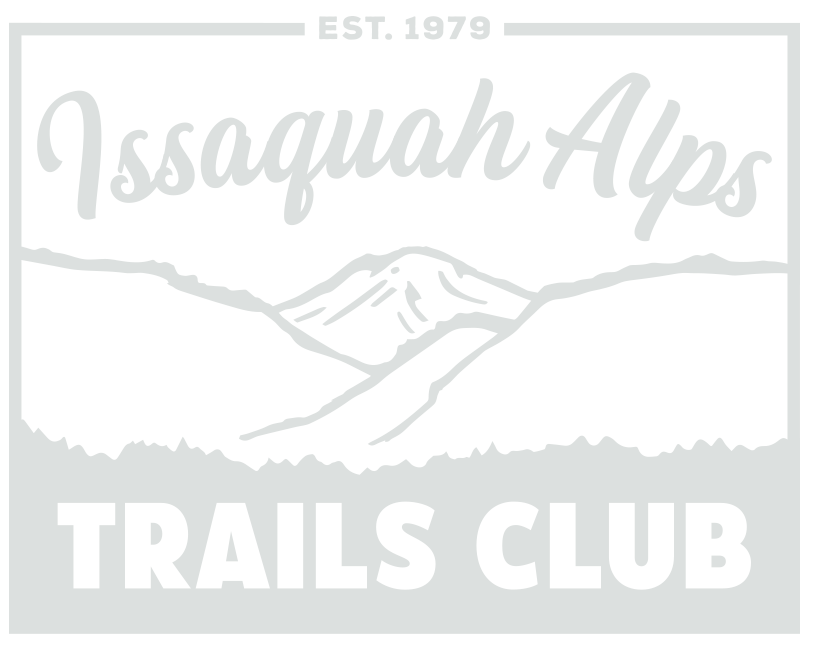The Issaquah Alps Trails Club has a rich 40-year history, much of which is captured in the Alpiner Archive- available here- and the images captured by club members over the years. This page offers an overview of that rich history.
Origins of the Club
In 1976 there were a number of trails within the area and some hikes were mentioned in guide books that were nearly all published by the Mountaineers. The parks on Cougar Mountain amounted to the site where the actual Nike missiles were located and the site where the actual radar station was located (maybe 30 acres in total?). Squak Mountain consisted of the 560 acre gift from Stimson Bullitt to the State of Washington. Tiger Mountain was a patchwork of private and public lands being clearcut at a rapid rate and a great place to run motorcycles, have mud runs, shoot up everything, abandon stolen cars and dump garbage (and worse!).
It was also in 1976 that hiking guide author, conservationist and Cougar Mountain resident Harvey Manning came up with the outrageous name for the foothills surrounding Issaquah, "Issaquah Alps," which none of us could say with a straight face at that time. Harvey's writing about the Alps appeared in newspapers and newsletters of hiking and conservation groups. As it turned out there were a number of people that knew about trails and special places on Tiger, Squak and Cougar mountains and connected with Harvey to share information and figure out how to protect the trails and lands that were so important to each of them. Hikes were publicized in the local paper and discovery of the trail network, viewpoints, waterfalls and other special places were shared with the larger community. In 1979, the Issaquah Alps Trails Club was made official by the Secretary of State of the State of Washington.
There had been various efforts to come up with a hiking route from Puget Sound to the Cascades, but the idea really took off when the club reversed the direction and promoted the "downhill" route from Snoqualmie Pass to Elliot Bay in 1990. The Mountains to Sound March was a huge success, but it left the club nearly broke and way in over our heads promoting a concept that covered an area several times larger than our "Alps." With the help of the top civic leaders in the region and leading elected officials we were saved by the formation of the Mountains to Sound Greenway Trust.
The club had plenty to do with the original Alps and promoting Grand Ridge, Taylor Mountain, Rattlesnake Mountain, Little Si and other adjoining areas. The club continues to deal with all these areas and continues to work on the protection and appropriate recreational opportunities in the Middle Fork of the Snoqualmie and beyond.
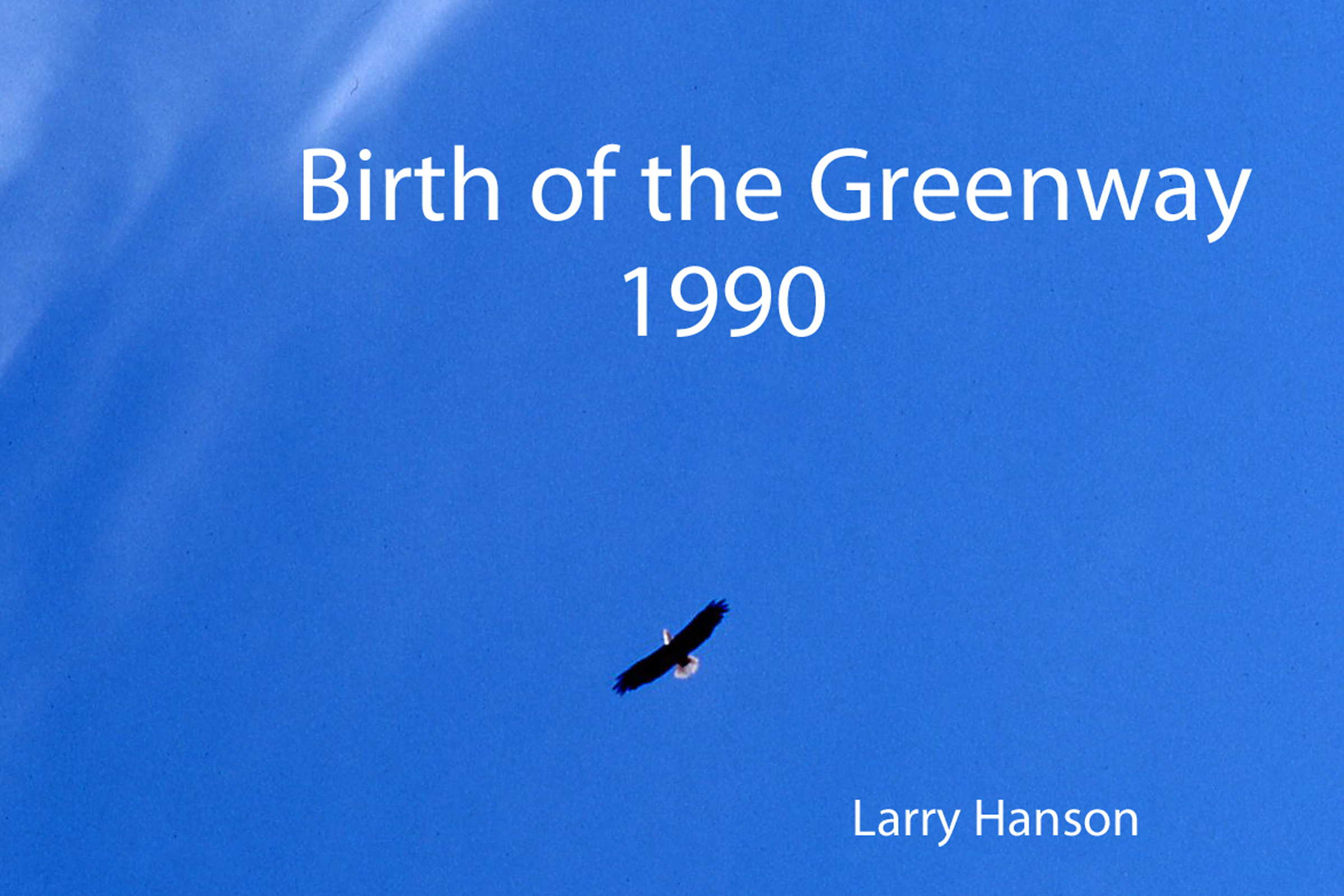
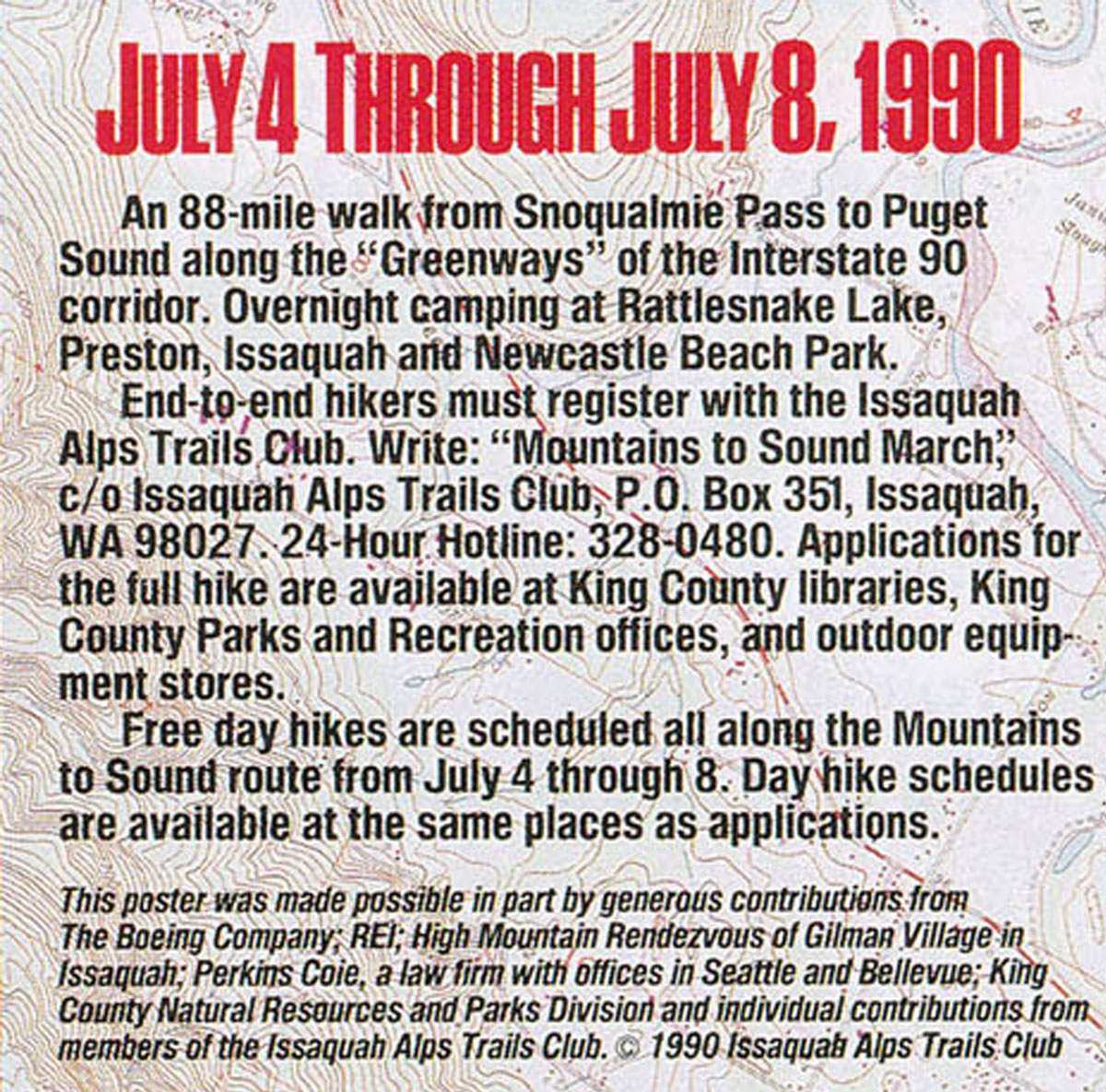


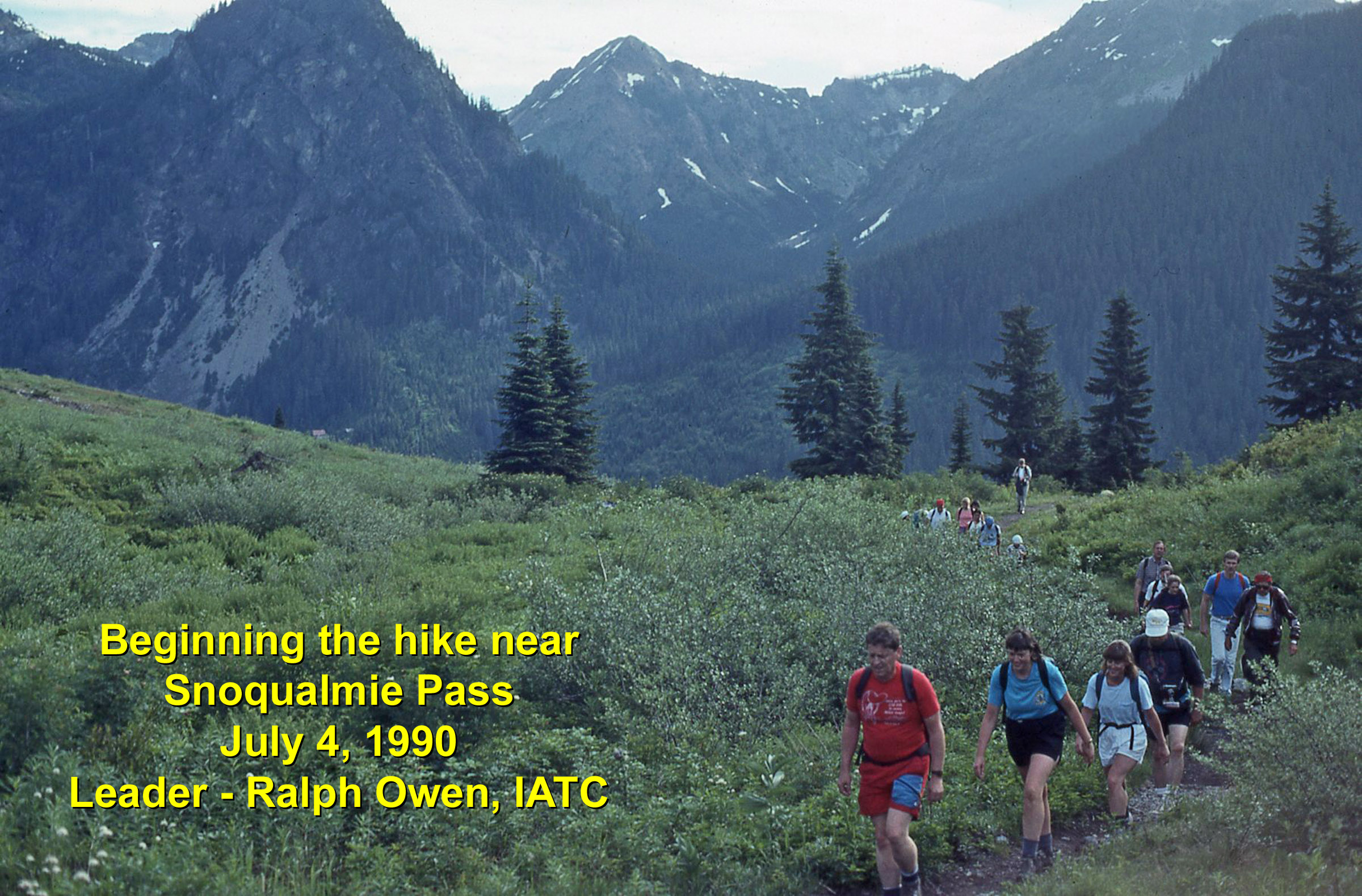
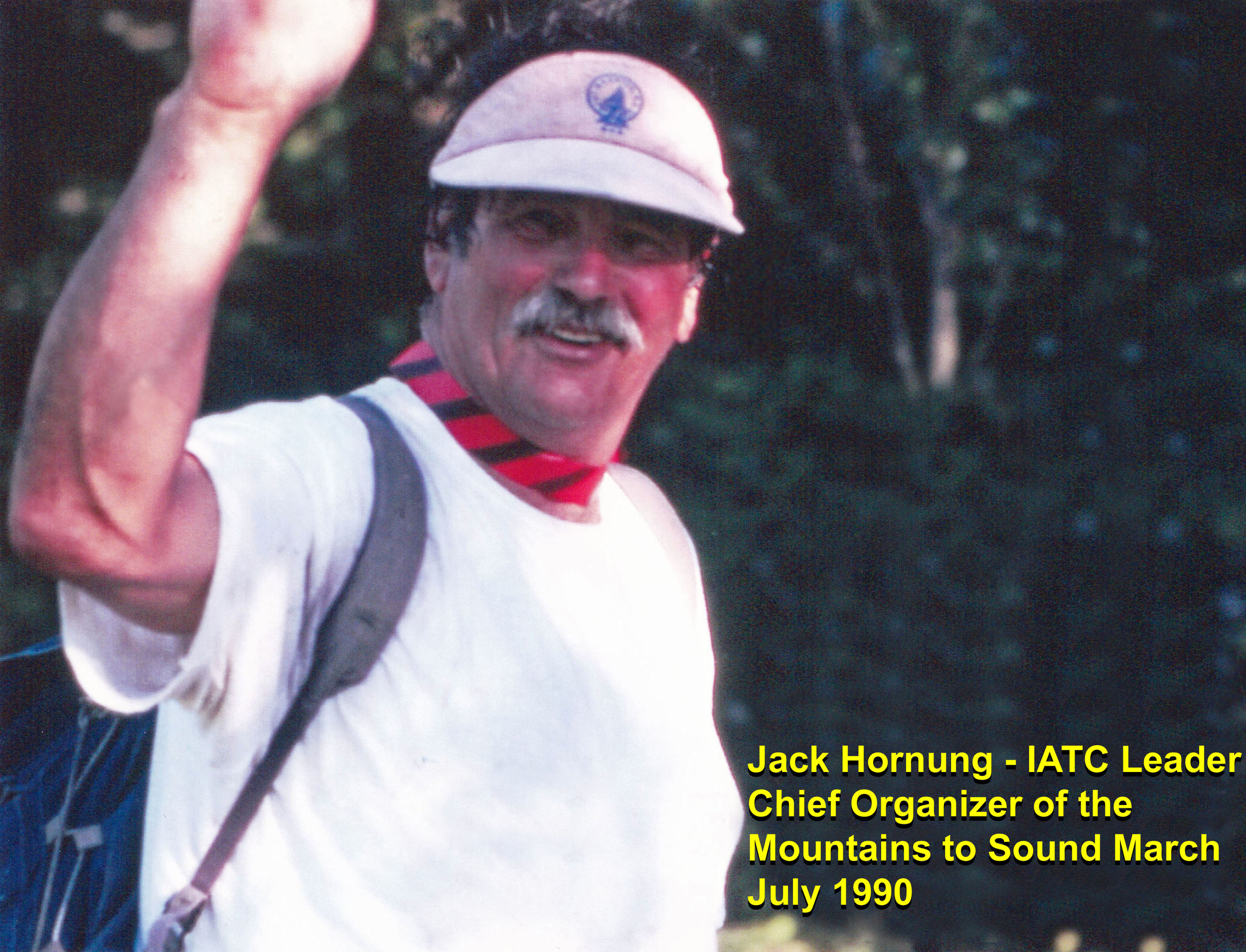
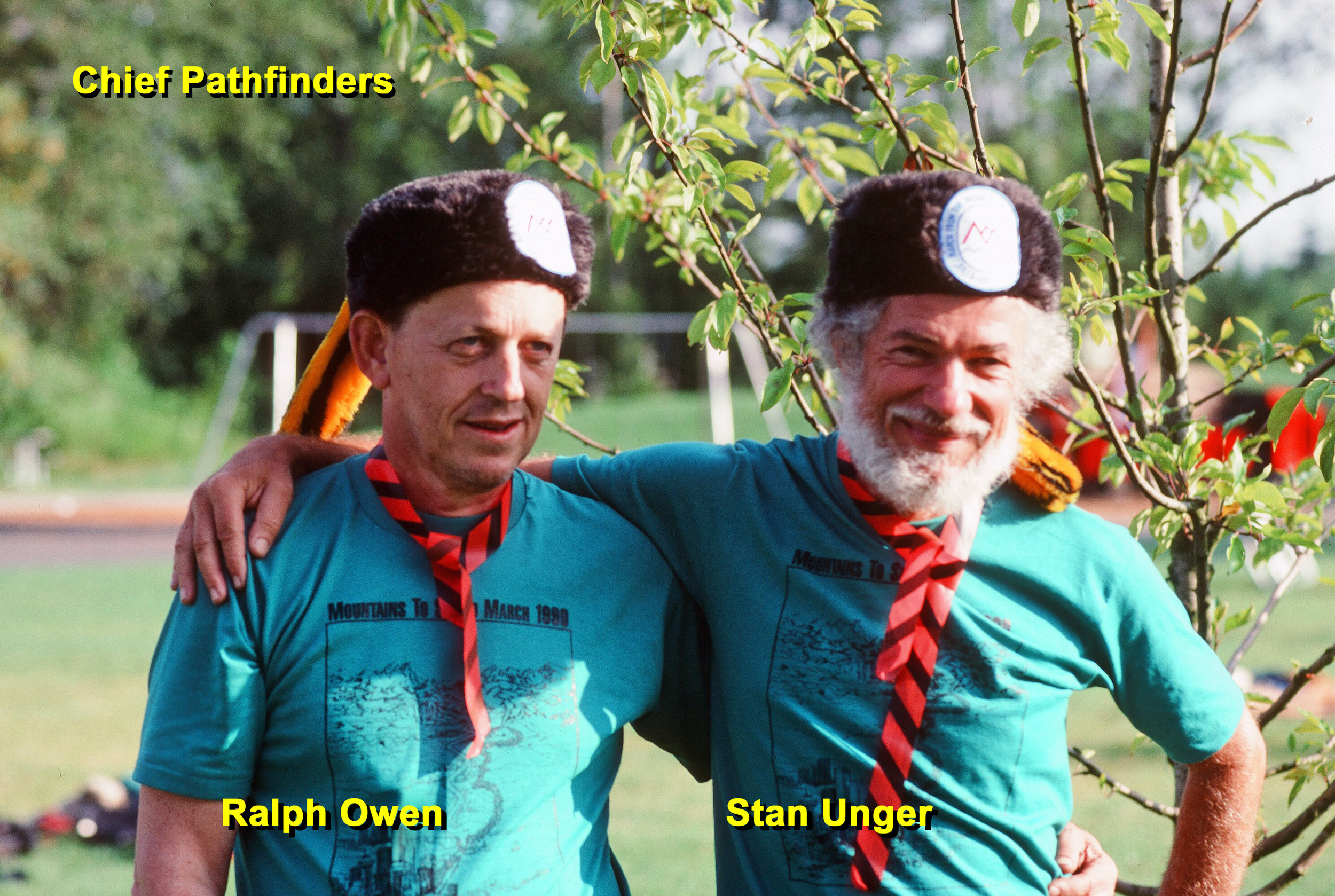
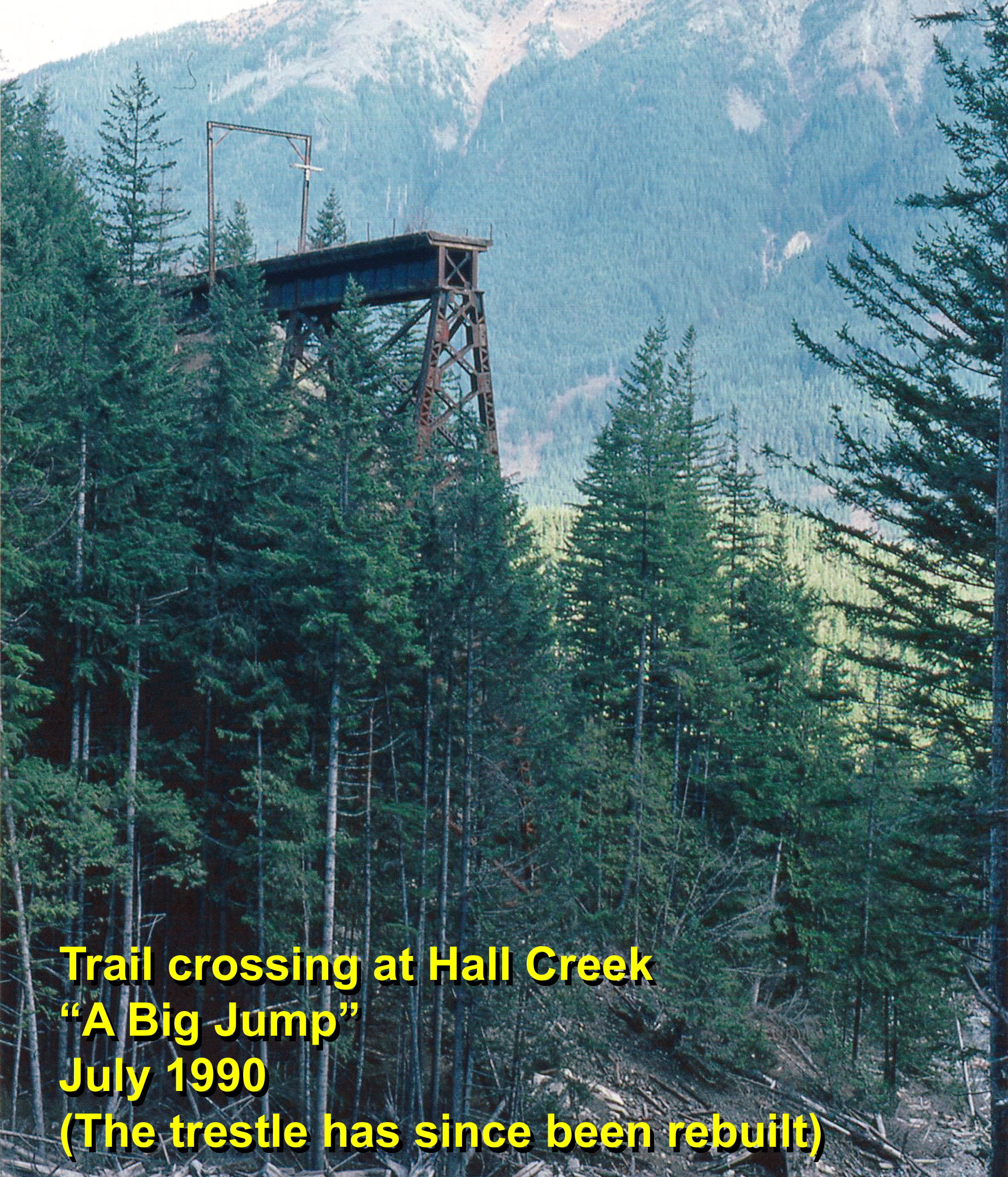
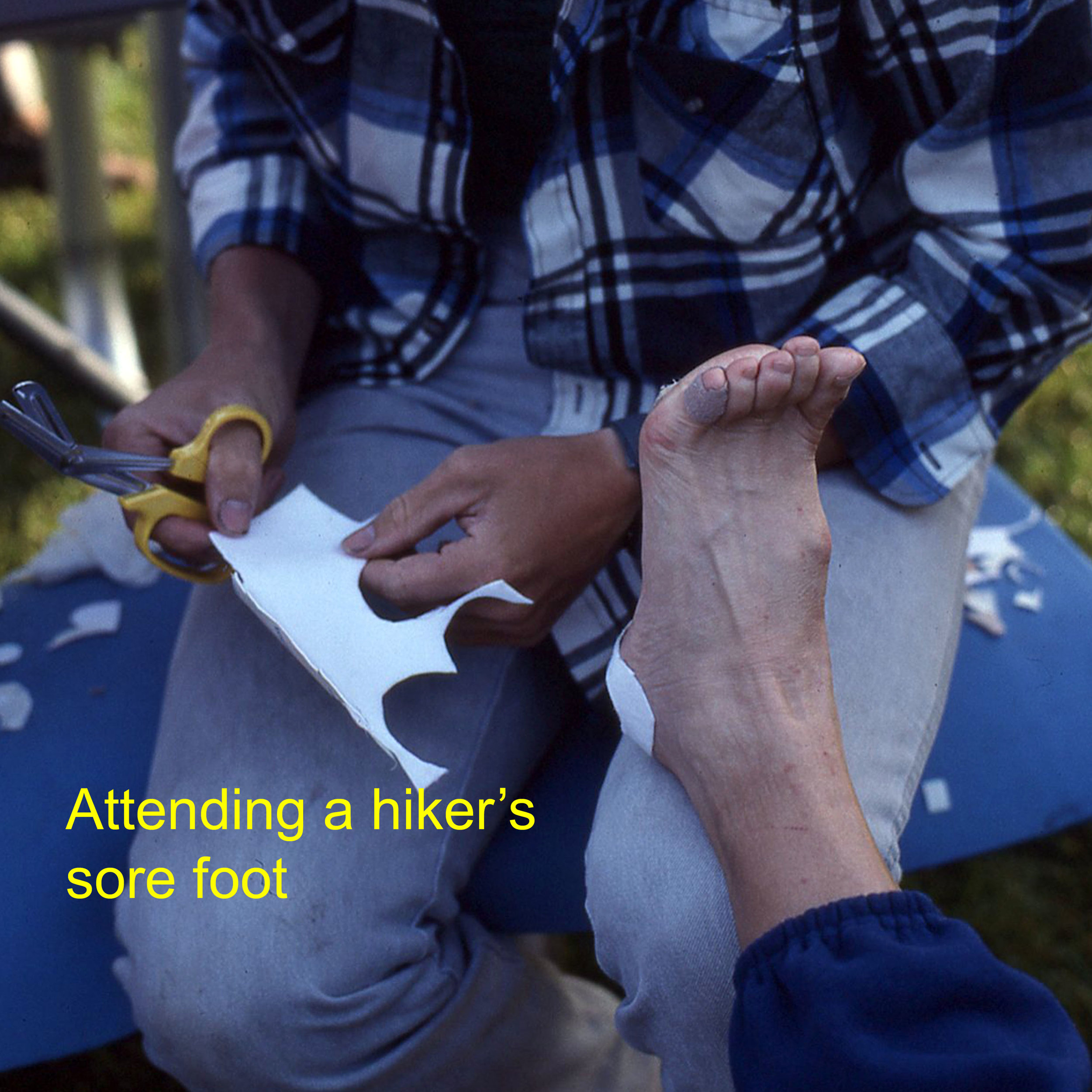
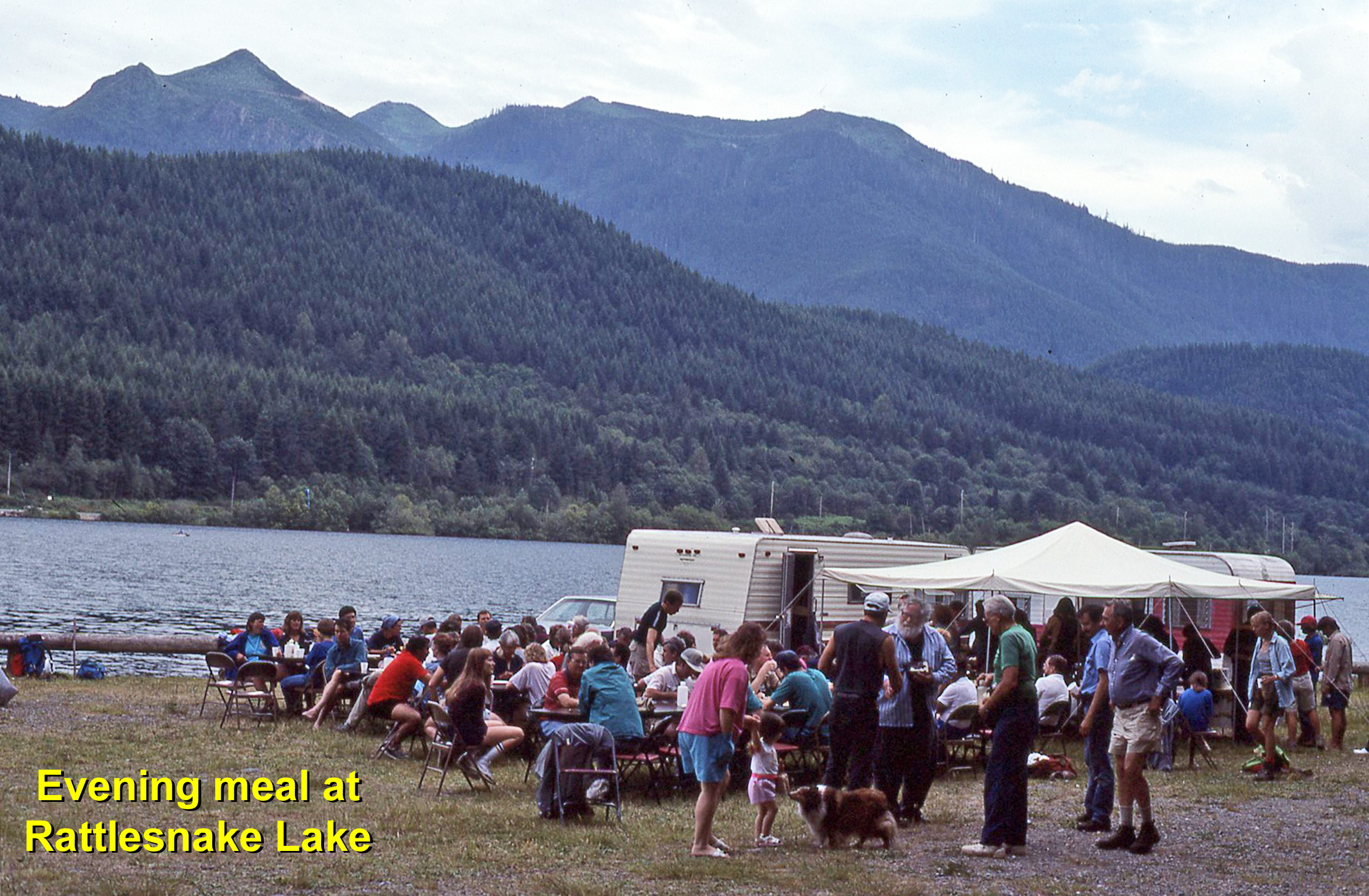
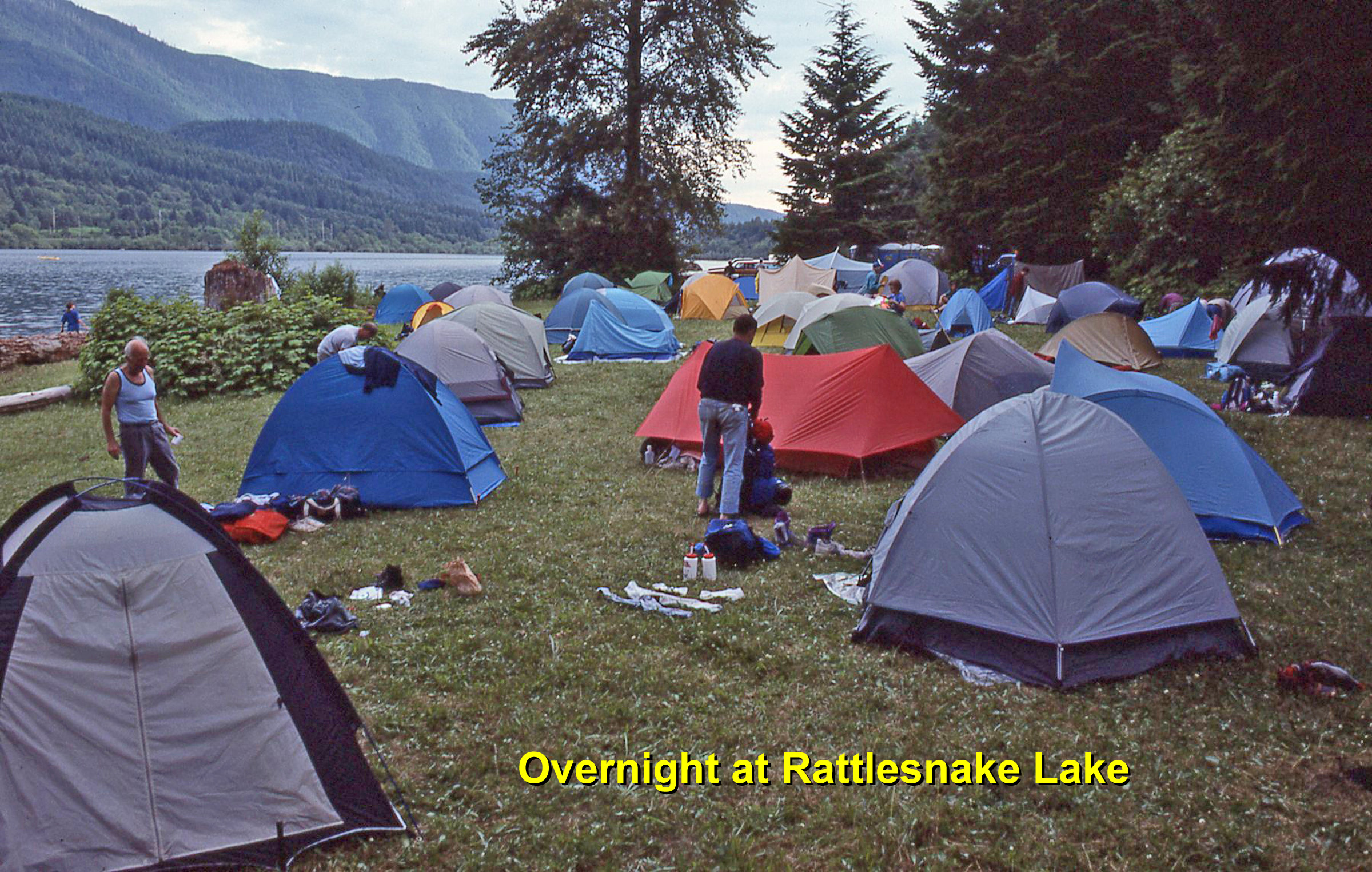
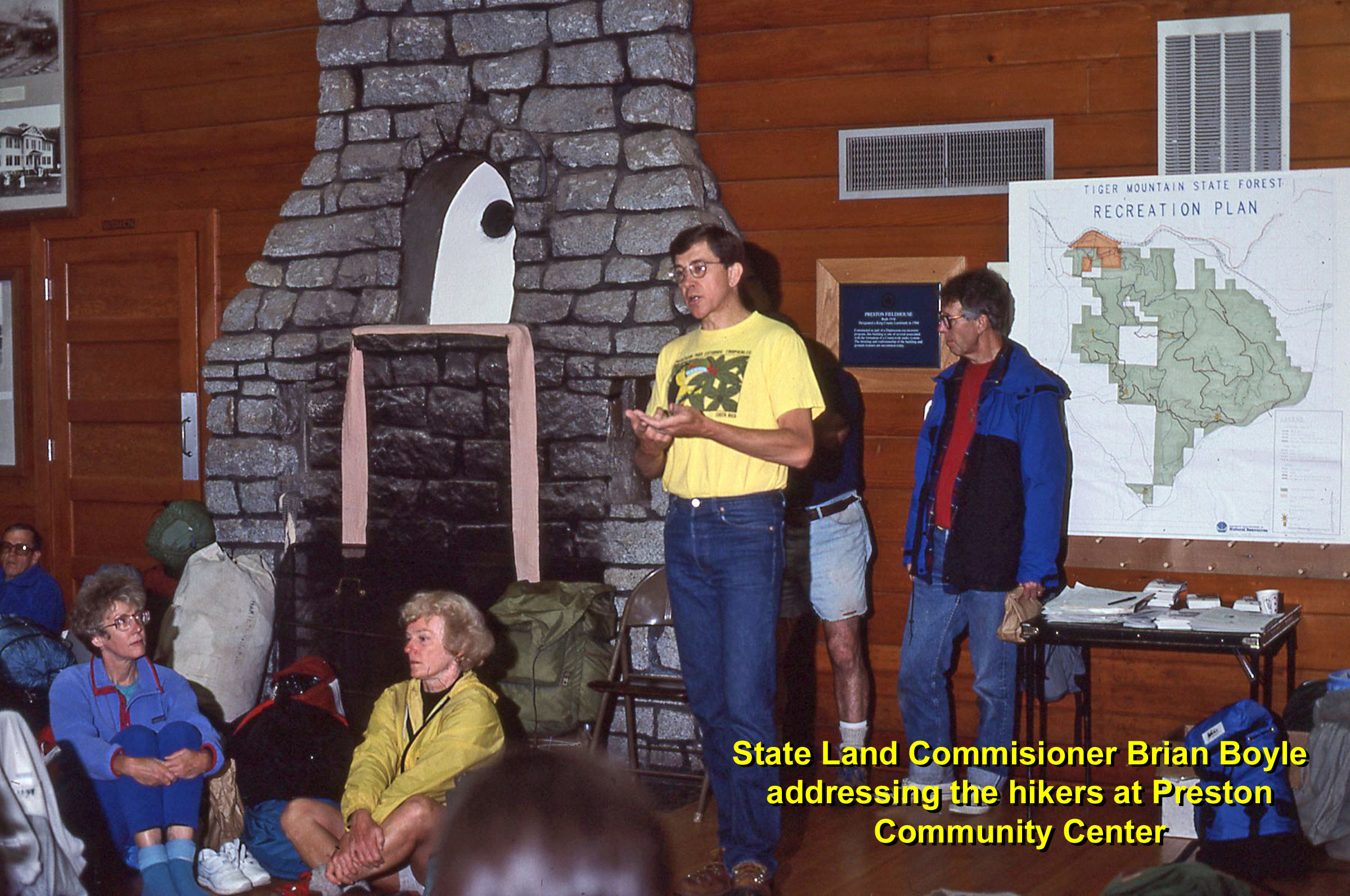
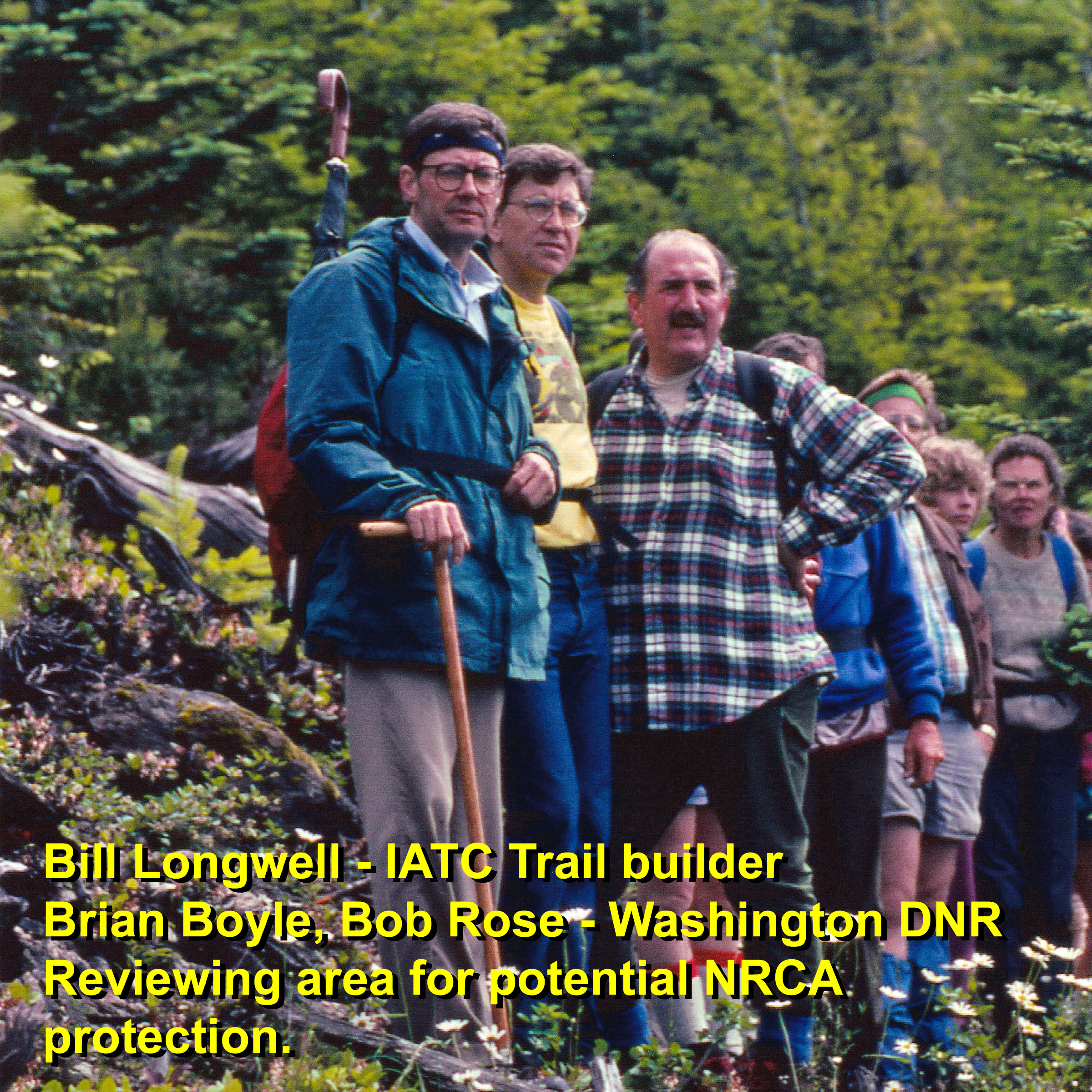

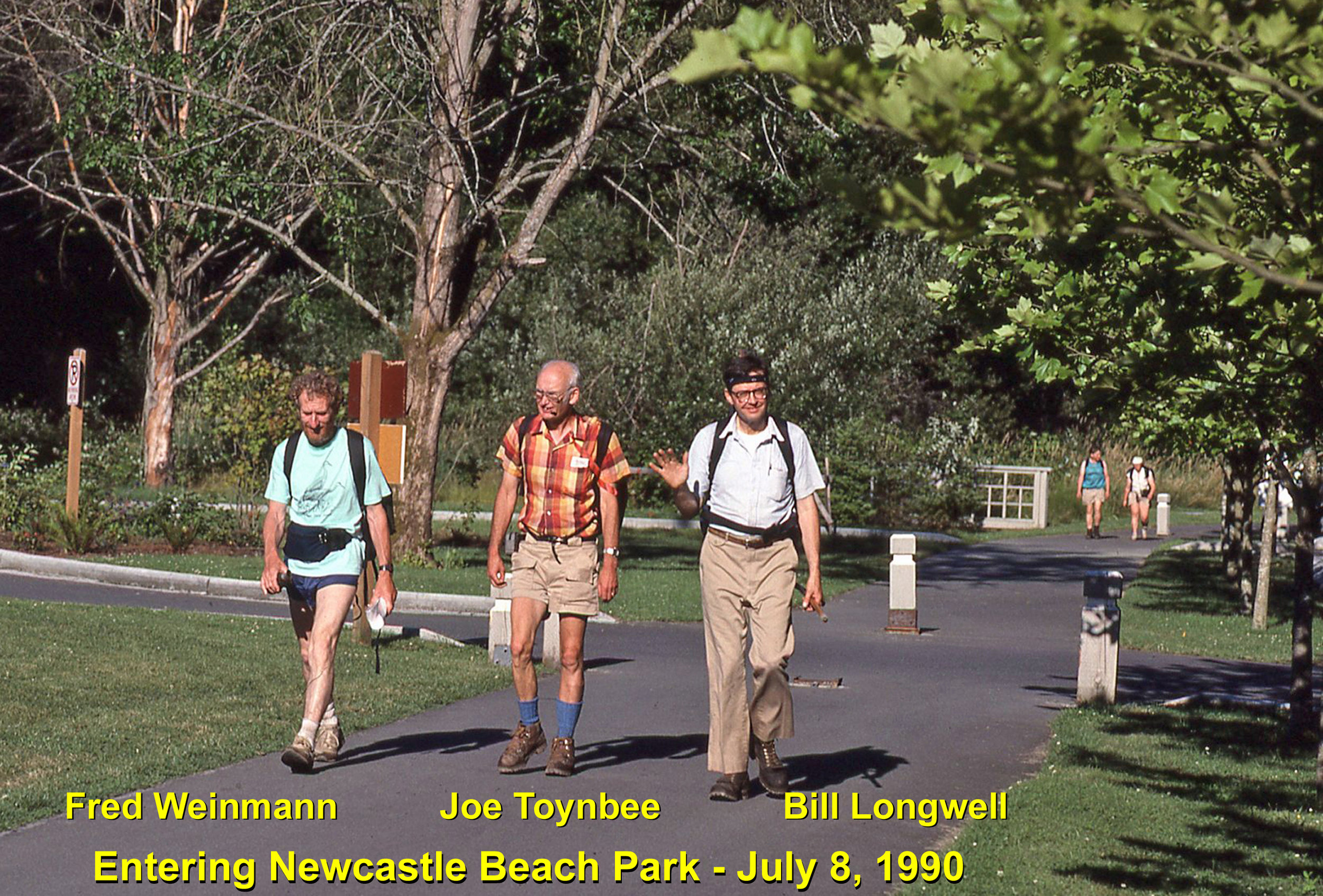
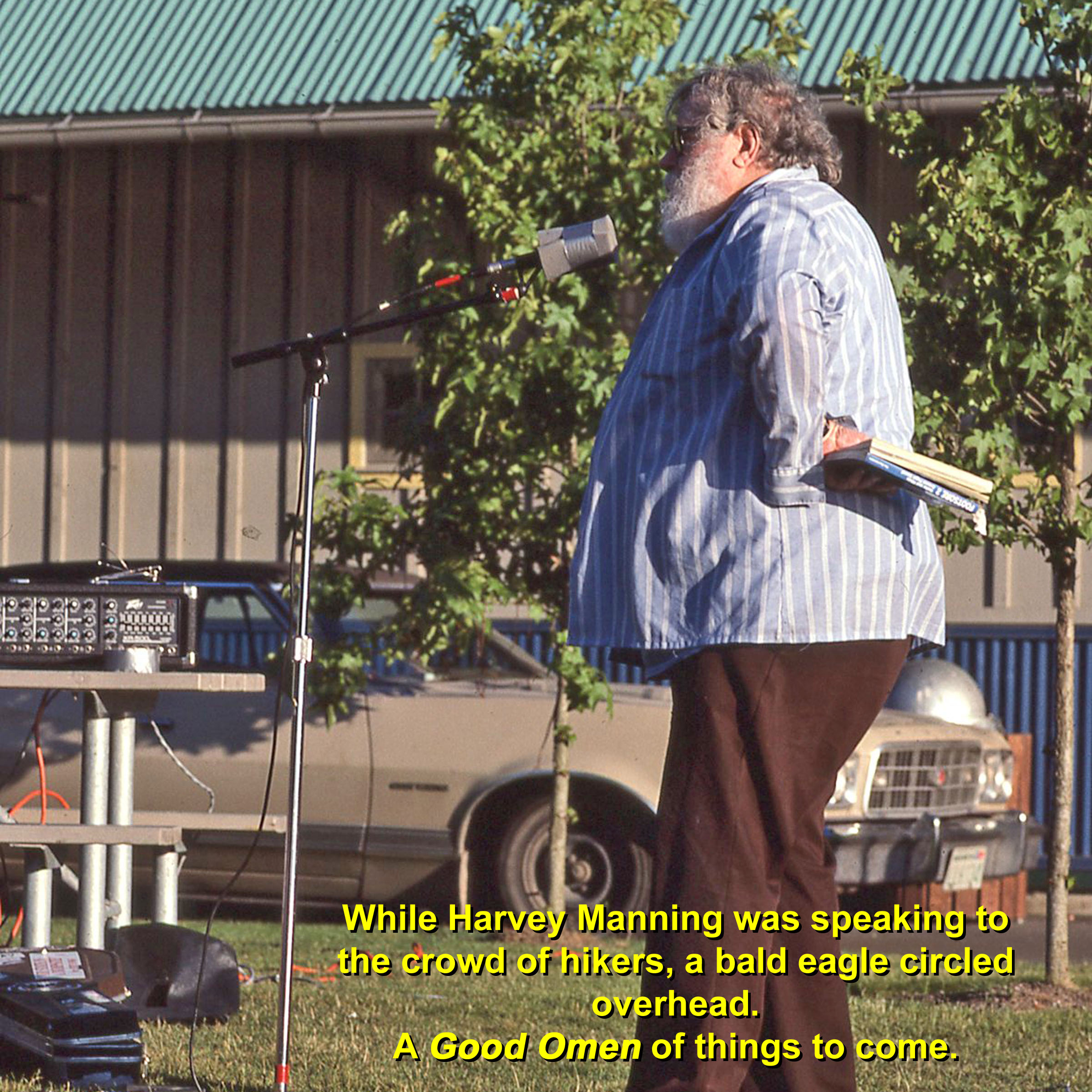
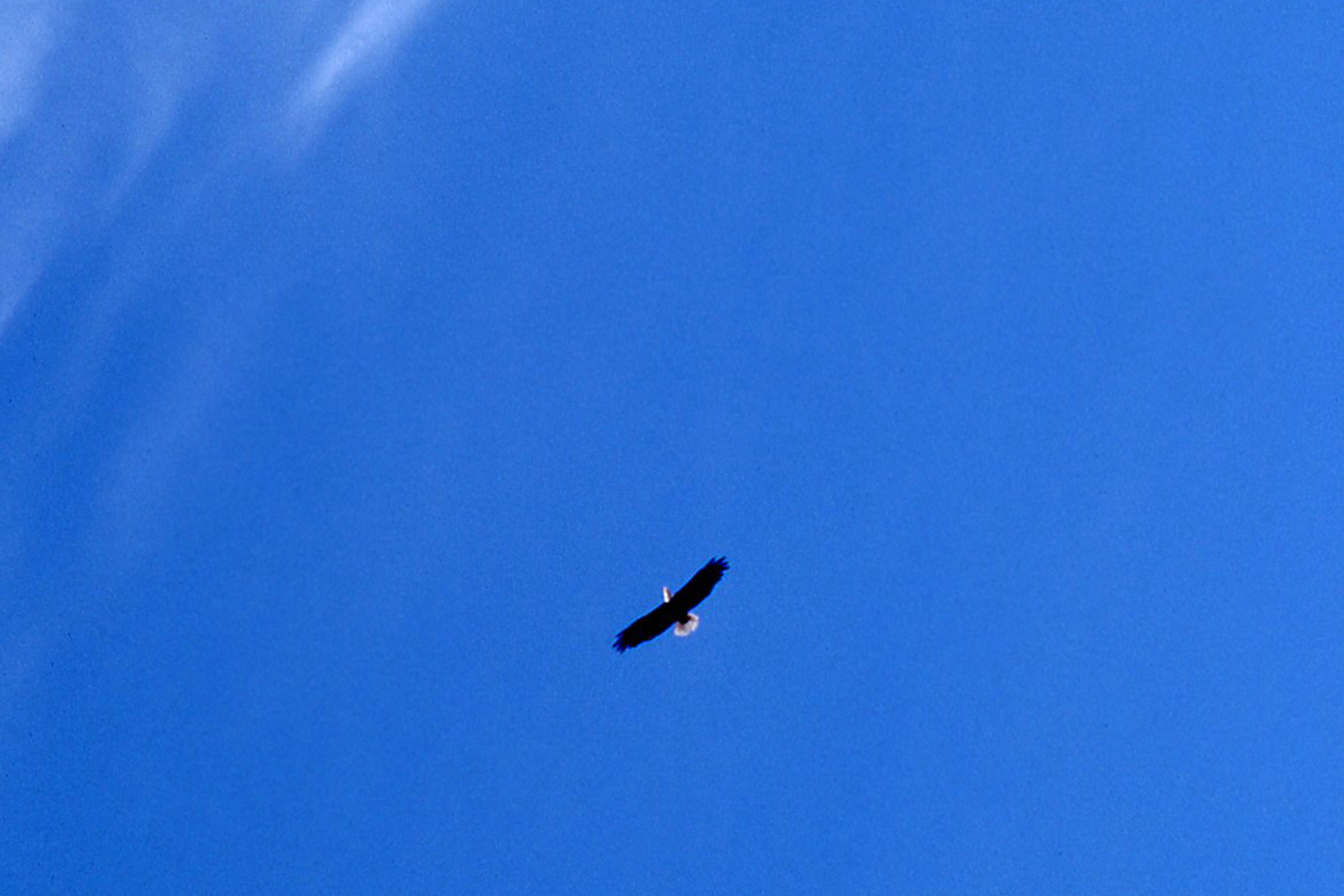
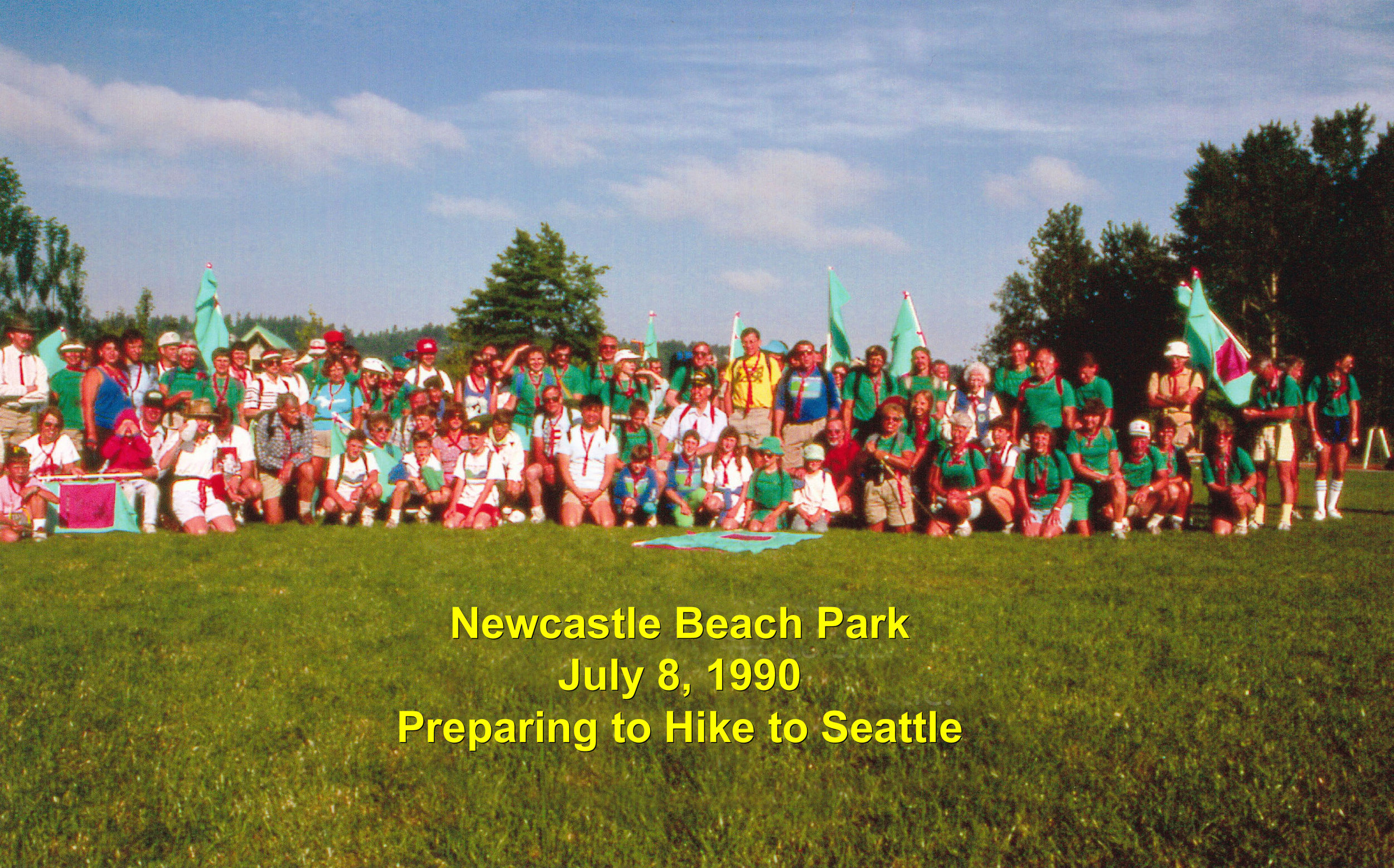

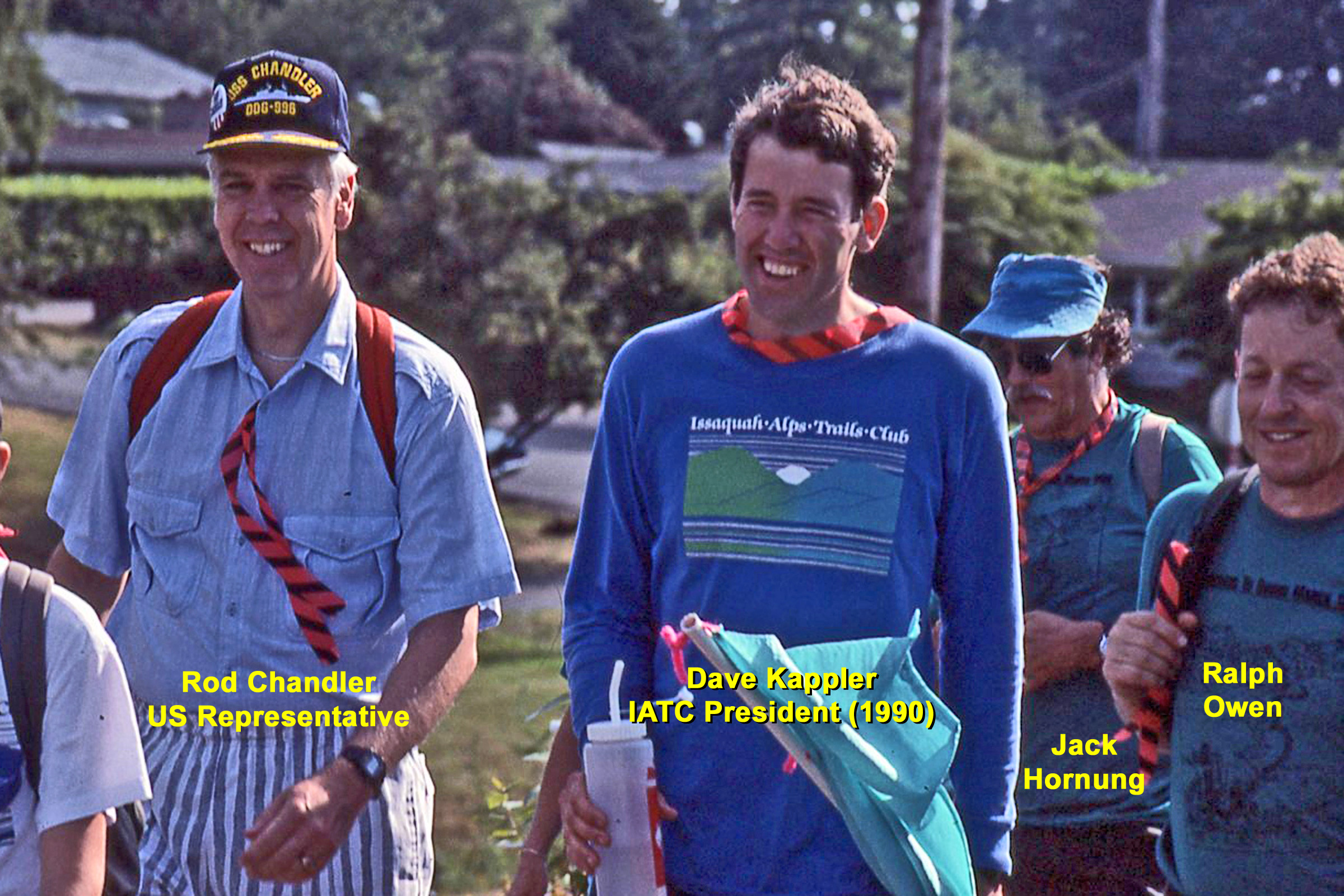

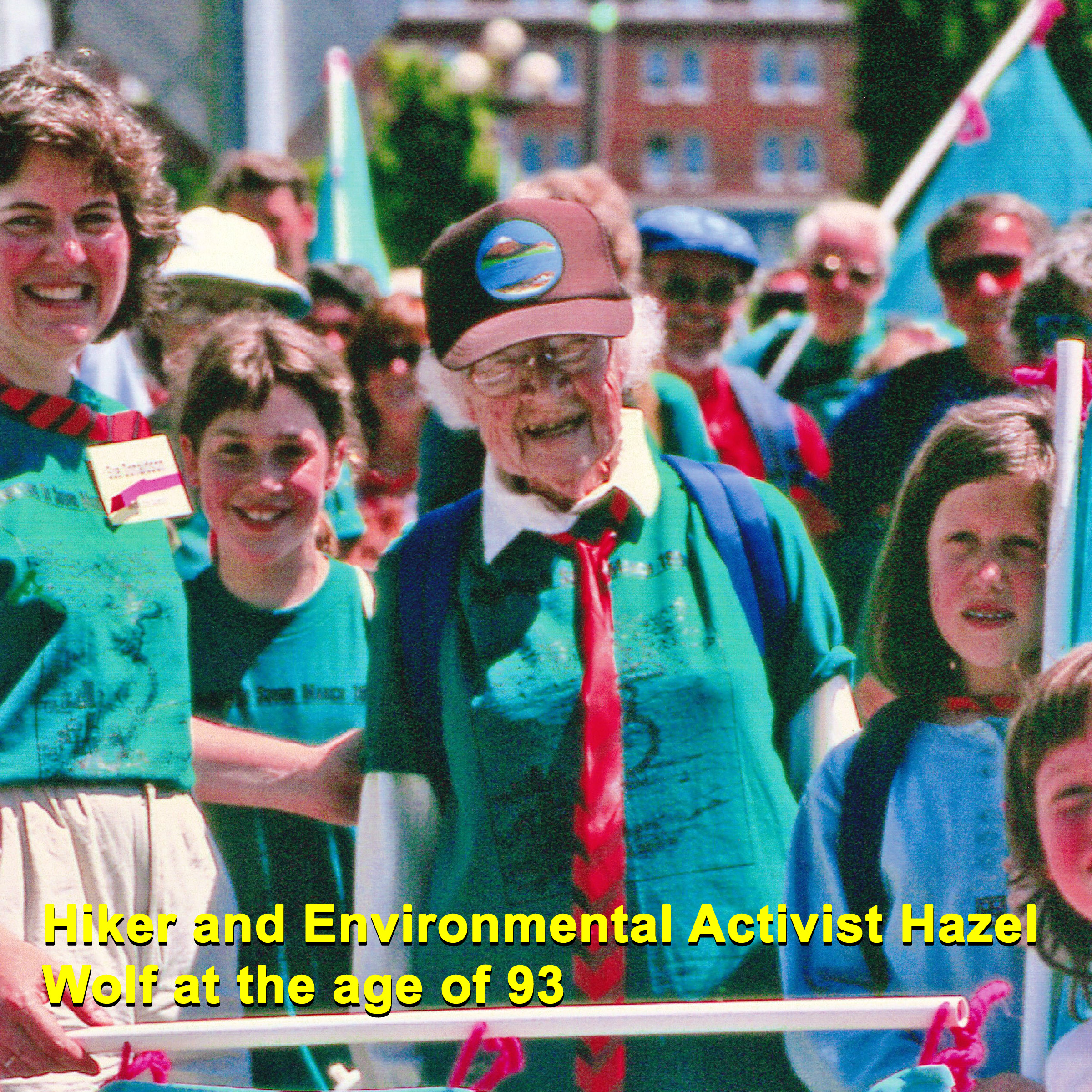
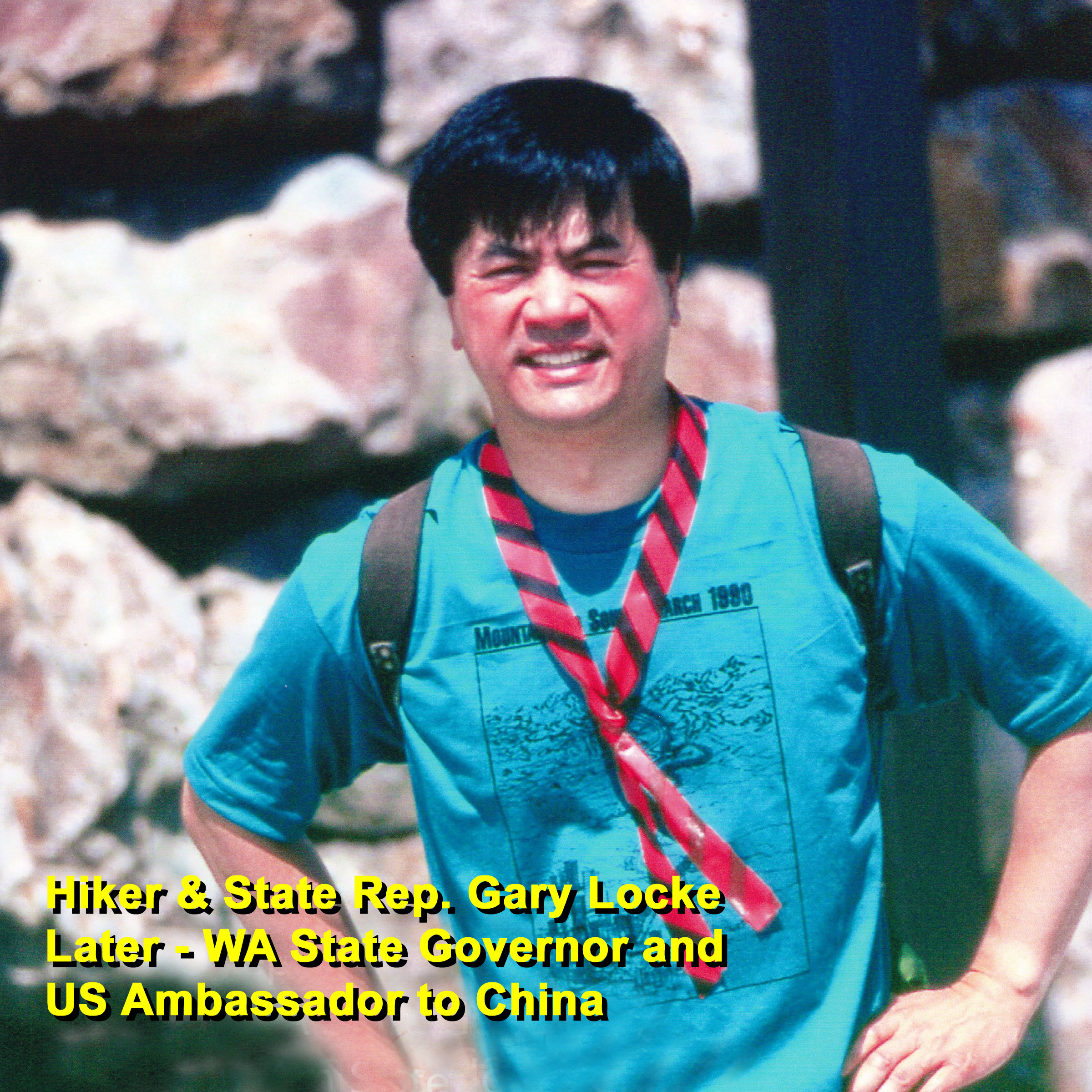
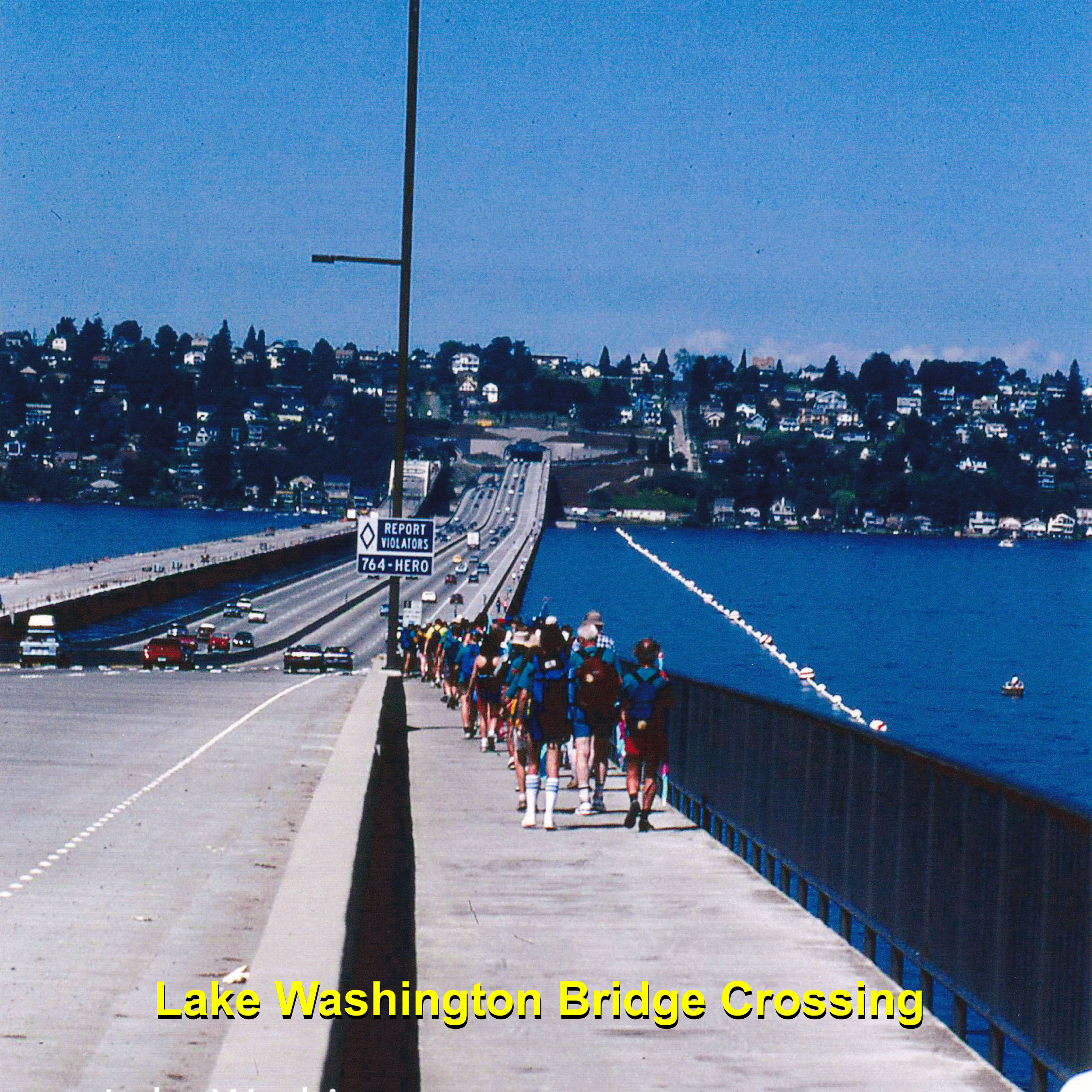


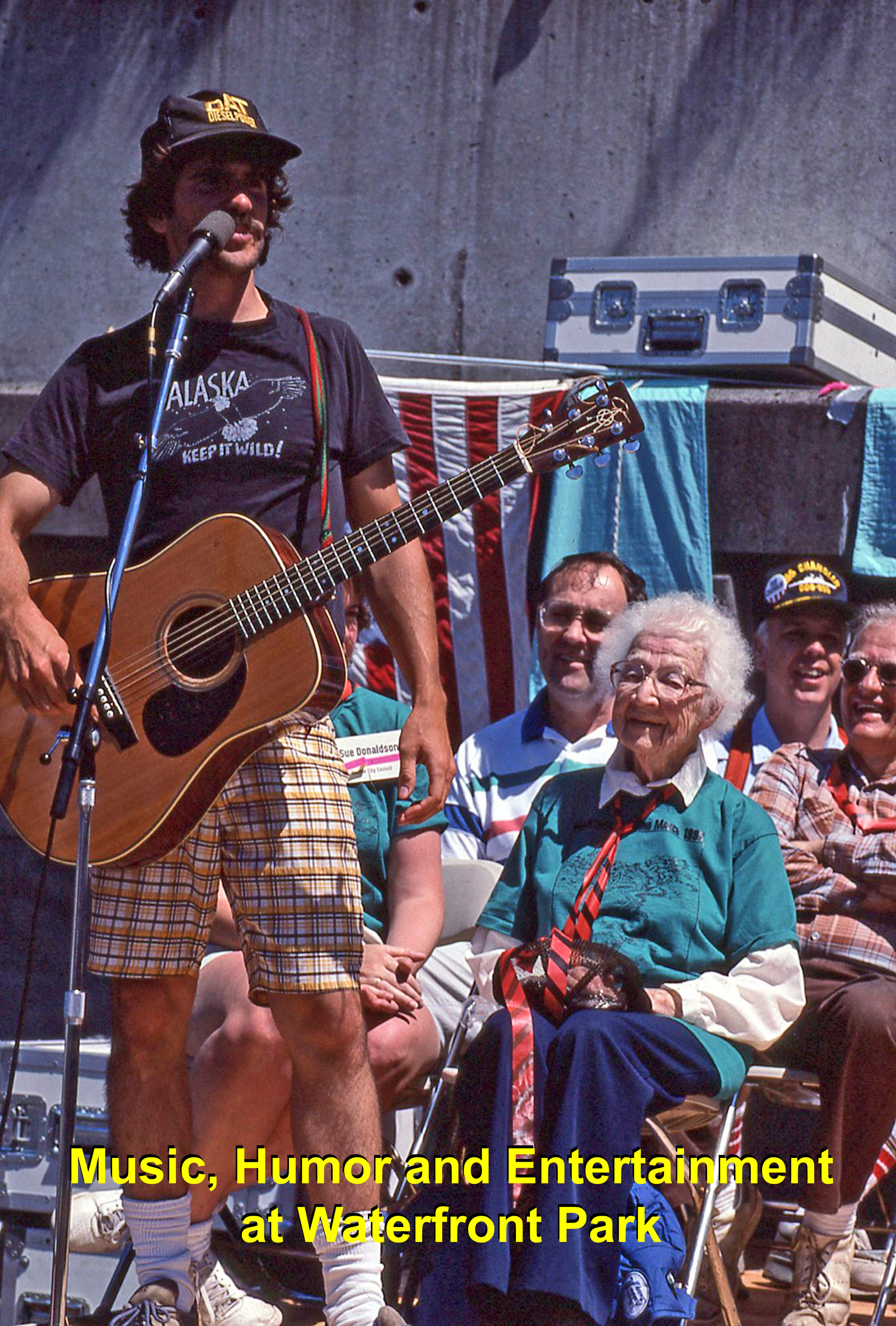

Harvey Manning
From: Wikipedia
Harvey Manning (July 16, 1925 in Ballard, Seattle, Washington - November 12, 2006 in Bellevue, Washington) was a noted author of hiking guides and climbing textbooks, and a tireless hiking advocate. Manning lived on Cougar Mountain, within the city limits of Bellevue, Washington, calling his home the "200 meter hut". His book Walking the Beach to Bellingham is an autobiography and manifesto fleshing out his journal of a hike along the shore of Puget Sound over a two year span.
From 1954 to 1956, Harvey Manning managed Seattle radio station KISW.[1]
Harvey Manning died November 12, 2006, in Bellevue.
Advocacy
Manning advocated trail protection and maintenance for much of his life, based on his extensive experience in the Washington outdoors (having backpacked since the 1930s). He was the bane of mountain bikers in the Seattle area. Manning believed foot traffic (both the boots and the horseshoe variety) cannot coexist with the greater speeds of bicycle enthusiasts and disdained local politicians beholden to wheeled-recreation advocates for "spouting pure Lycra". Largely as a result of his efforts, Cougar Mountain is off-limits to bikes and even Tiger Mountain has very limited single-track mileage where bikes are permitted.
Manning was a member of the North Cascades Conservation Council (NCCC) since its founding in 1957, serving as an editor of the NCCC journal "The Wild Cascades." Back issues are available on the NCCC website, see link below. A DVD of images of the North Cascades with his writing as the script is released by Crest Pictures as "The Irate Birdwatcher," which was a moniker he used in his early writings. His final book, published by NCCC, is "Wilderness Alps: Conservation and Conflict in the North Cascades," and details the history of the preservation movement there. It is available at the NCCC website.
Many of the names for peaks, creeks, wetlands, and trails on Cougar Mountain were invented by Harvey Manning. He discovered Coal Creek Falls and beat a trail to it, and discovered the foundation for the steam hoist in Red Town. With the goal of preserving wildlands within urban King County, Manning designated (in the pages of Footsore 1) the odd twenty mile-long spur of Cascade Mountain foothills along I-90 near Seattle as the "Issaquah Alps" and founded the Issaquah Alps Trails Club in 1979. The club serves to improve and publicize hiking around Issaquah, Washington. A bronze statue of Manning stands in an Issaquah park.
Today many of his conservation goals are carried on by the American Alps Legacy Project, an initiative of NCCC and the Mountaineers.
^ Harvey Manning, "Letter to the Editor," Seattle Weekly, 21 September 1994.
Bill Longwell
If Harvey Manning, IATC's founder and long-time president, was the heart of the club, Bill Longwell (1936-2007) was its soul. An original club member in 1979, Longwell spent more time in the Alps than anyone else, improving and developing the trail system on Squak Mountain, his first love, then taking on Tiger Mountain.
Longwell oversaw the construction of the 16-mile Tiger Mountain Trail, an enormous task, spent countless time on Tiger's trails, and, of course, wrote the club's penultimate guidebook, "Guide to the Trails of Tiger Mountain," which has gone through numerous editions over the years. But his grand efforts on Squak and Tiger were not his only contributions to the Issaquah Alps.
Longwell was named Chief Ranger of the club by Manning, a title of which he was proud and whose responsibilities he took very seriously. Besides serving on IATC's Board of Directors for 26 years (five years longer than anyone else), he started and led the trailworking efforts of the Weedwhackers, whose weekly outings were vital to area trails. And he wrote countless articles about his experiences in the Issaquah Alps.
Longwell was a great gentleman, a proud family man, a notable educator, and a Renaissance man of many dedicated interests. He was proud of covering over 50,000 miles in his hiking career. The annual scholarship given by IATC is in his honor. --Doug Simpson
